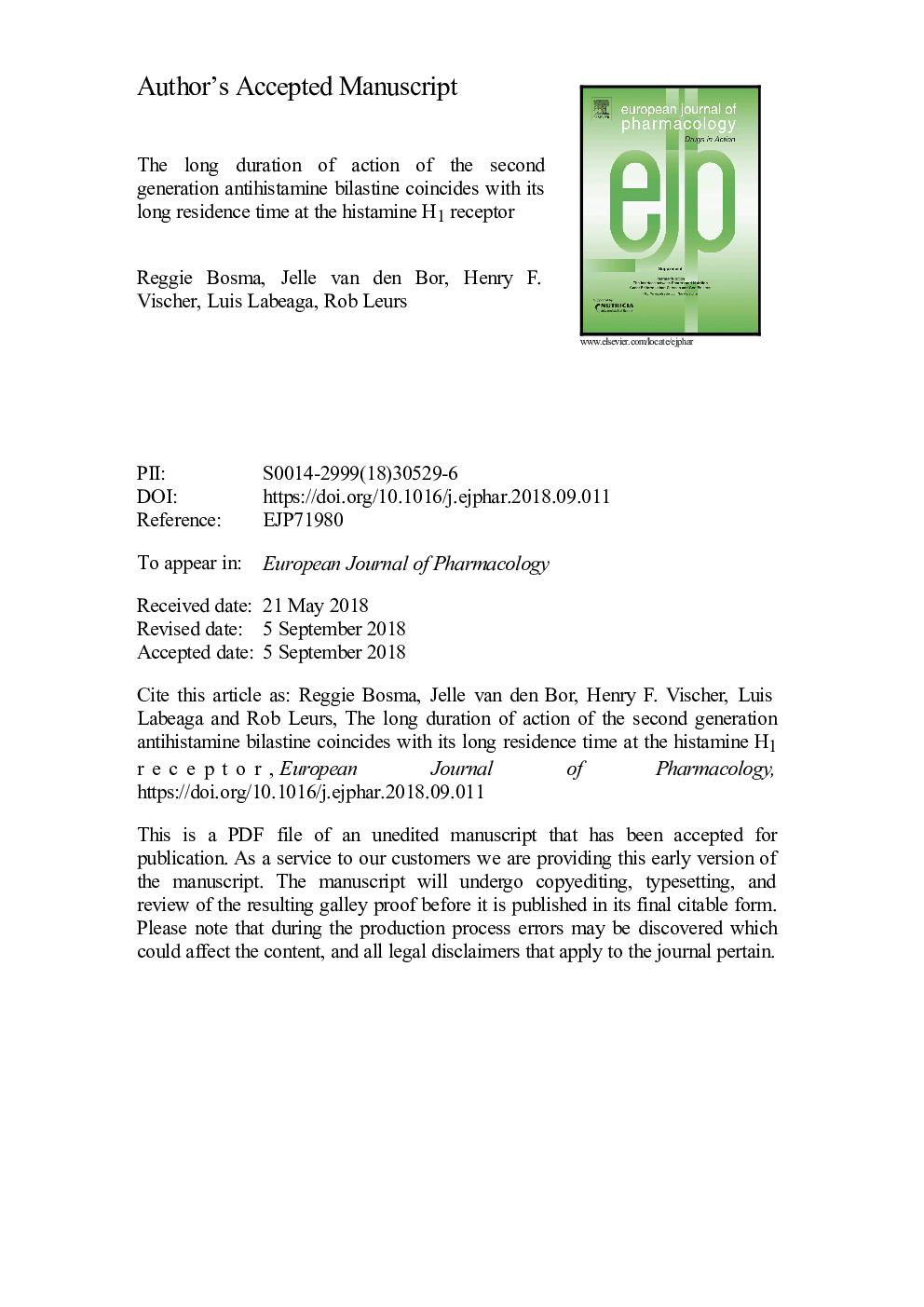| Article ID | Journal | Published Year | Pages | File Type |
|---|---|---|---|---|
| 10158427 | European Journal of Pharmacology | 2018 | 20 Pages |
Abstract
Drug-target binding kinetics has recently attracted considerable interest in view of the potential predictive power for in vivo drug efficacy. The recently introduced antihistamine bilastine has a long duration of in vivo drug action, which outlasts pharmacological active bilastine concentrations in blood. To provide a molecular basis for the long duration of action, we explored the kinetics of bilastine binding to the human histamine H1 receptor using [3H]mepyramine binding studies and compared its pharmacodynamics properties to the reference compounds fexofenadine and diphenhydramine, which have a long (60â¯Â±â¯20â¯min) and short (0.41â¯Â±â¯0.1â¯min) residence time, respectively. Bilastine shows a long drug-target residence time at the H1 receptor (73â¯Â±â¯5â¯min) and this results in a prolonged H1 receptor antagonism in vitro (Ca2+ mobilization in Fluo-4 loaded HeLa cells), following a washout of unbound antagonist. Hence, the long residence time of bilastine can explain the observed long duration of drug action in vivo.
Keywords
Related Topics
Life Sciences
Neuroscience
Cellular and Molecular Neuroscience
Authors
Reggie Bosma, Jelle van den Bor, Henry F. Vischer, Luis Labeaga, Rob Leurs,
